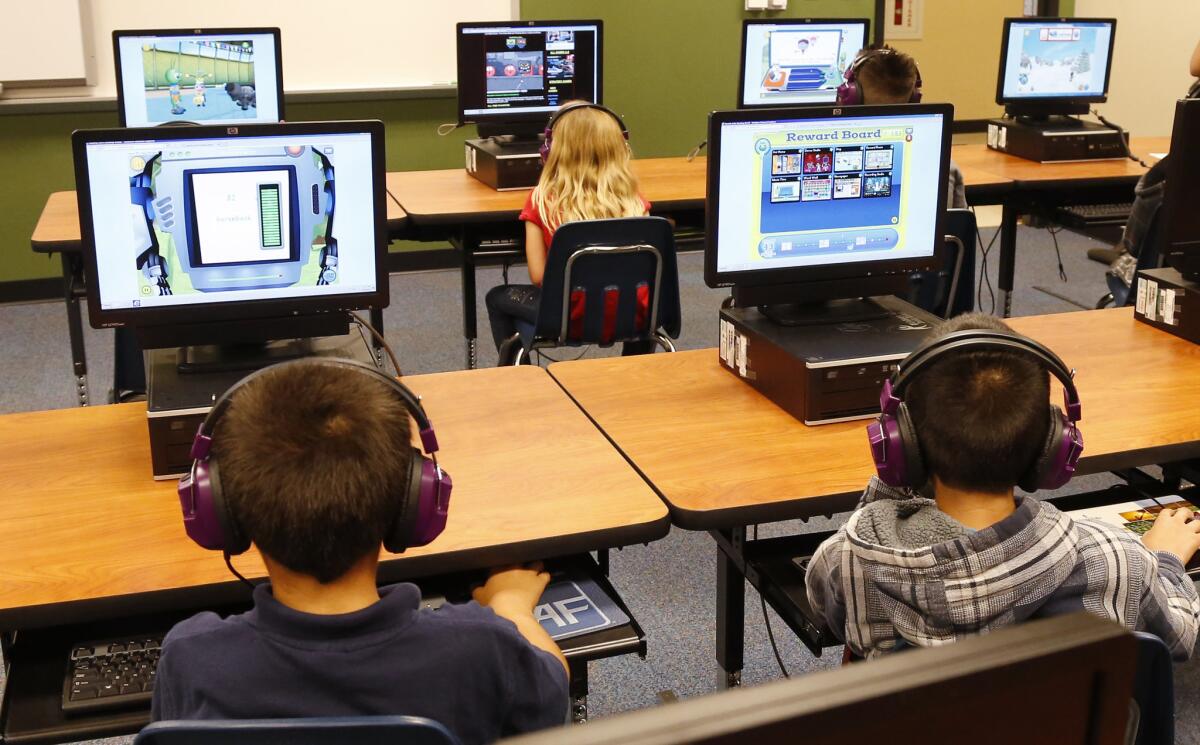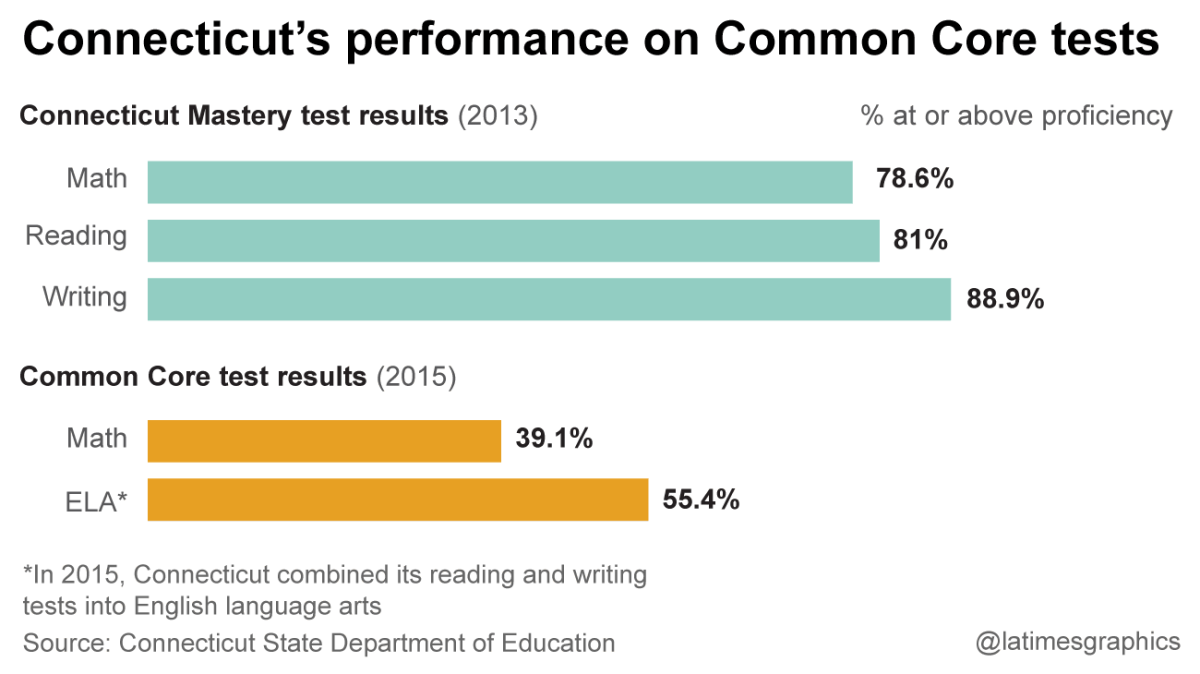What Californians can learn from other states’ Common Core test results

The percentage of students deemed proficient in math and language arts fell sharply as states switched to a new Common Core exam with new benchmarks. Above, students work on reading at a summer academy in Oklahoma City.
- Share via
Parents of California, this week, you might be in for a nasty surprise.
New test results are coming out — likely on Wednesday, as the California Department of Education has said. These will be the first state standardized test results released after two years.
California’s test is a tailored version of Smarter Balanced, a consortium that developed a Common Core test several states. The other Common Core states are either using their own tests or using tests associated with another consortium, known as PARCC.
Statisticians caution that the new exams are so disconnected from the previous ones that trying to compare their results would be foolish. But what the old and new tests have in common is that they present results by stating what percentage of students know enough to be deemed proficient in a certain subject. The dramatic difference from one set of results to the next can show how differently old and new tests set the bar for success in a given subject.
Across the country, that number has plummeted, eliciting responses that range from disappointment to outright protest to an expression of pride for finally being honest about what students really do and don’t know.
So far, a smattering of states have already gotten their first results on Common Core exams, and the reactions have varied dramatically. Some states have been better prepared to face the ostensibly bad numbers than others. These reactions give Californians a sense of what they can expect this week.
THE EARLY ADOPTERS
In Kentucky and New York, results came early.
Kentucky’s first slew of results, out in 2012, set expectations for other states: The percentage of students deemed proficient on Common Core tests dropped between 30 and 40 percentage points. The state’s education commissioner at the time, Terry Holliday, said he was “a little bit” shocked, according to U.S. News & World report. Holliday had spent time preparing the public to expect significantly lower scores — as a result, the reaction was relatively quiet. Still, some educators struggled with the disappointing report. “It’s a tough blow for students and teachers,” Carmen Coleman, superintendent of the Danville Independent district, told Education Week at the time.
Officials in New York City presented the results with the caveat that the plummeting scores only represented a harder test — they went as far as to include a map that listed other states’ proficiency drops. Even so, parents and teachers found the results alarming. In 2012, 64.8% of students in the state had been deemed proficient in math, compared with 31.0% on the Common Core exam used in 2013. Critics alleged that the harder tests set students up for failure, and parents turned a series of town hall meetings with then-state education Commissioner John King into protests.

Smarter Balanced results
A few states in the Smarter Balanced Assessment Consortium have released their results. The bar for proficiency on the SBAC tests is the same from state to state. (But states can decide how much students have to know in order to, say, earn a diploma if the test is used as an exit exam.)
In early July, Idaho received its preliminary results on SBAC, and in most grades, students beat the expectations. For example, while only 38% of seventh graders were expected to be deemed proficient in English language arts, 51% of them met the bar. In eleventh grade math, though, 30% of students reached proficiency, compared with the expected 33%, according to Education Week.
Oregon also released its scores back in July, and according to the Oregonian, students “smash[ed] expectations” in reading and writing, despite rock-bottom proficiency rates. By the time 95% of the tests were graded, 45% of students statewide were deemed proficient in math, and 55% met that standard in English language arts. The newspaper describes then-state schools chief Rob Saxton as being “delighted” with the results. In high school, though, the state had expected that 33% of juniors would reach math targets — in reality, 31% did.
This August, Washington state released its scores on its version of the local Smarter Balanced assessment. While the test scores showed that almost half of the state’s students performed below proficiency, the results were interpreted as beating expectations — because everyone knew a harder test was coming. State Supt. Randy Dorn told The News Tribune that the scores show Washington was “moving in the right direction” thanks to “raw, hard work” in the classroom.
In early September, Delaware’s SBAC scores showed mixed results. Gov. Jack Markell reacted by calling the outcomes more honest, according to Newsworks. “A dose of honesty is very much in order here,” he said. In fifth grade English, 76.4% of students reached proficiency on the state’s old test in 2014, compared with 55.5% on the new Common Core tests. The differences in performance between the two tests ranged from 16.1 percentage points to a full 45.2 percentage points in high school math, Newsworks calculated.

And only a few days ago, Connecticut got its first dose of Smarter Balanced scores. There, while the trend was similar to those of other states, the reaction was slightly more tepid. According to the Hartford Courant, 39.1% of students reached proficiency in math, compared with 78.6% on the previous test in 2013.
You can reach Joy Resmovits on Twitter @Joy_Resmovits and by email at Joy.Resmovits@LATimes.com.
Sign up for Essential California
The most important California stories and recommendations in your inbox every morning.
You may occasionally receive promotional content from the Los Angeles Times.








